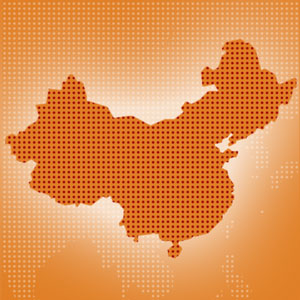B2B Technology Marketing and Media – Market Spotlight: China
An interview with Shirley Xie – Country Manager, TechTarget China
In this 2016 Market Spotlight series we’ll be giving in-depth interviews with regional marketers on the current state of B2B technology marketing in countries around the world. This series is meant to provide regional background understanding of unfamiliar markets that you, as a marketer, might be purchasing or working within.
In today’s blog we’ll be talking with Shirley Xie, the country manager for TechTarget China. Having worked in B2B IT media for the last 12 years, Shirley has managed the TechTarget China team for 10 years and helped launch direct operations in that country. She currently is responsible for TechTarget China’s business including editorial, audience development, product marketing, campaign operations and finance for 13 localized websites. In 2016 she led the launch of TechTarget’s Activity Intelligence ™ dashboard in Simplified Chinese to highlight the behavior of digital leads in region.
Can you give a current market landscape? What is going on today in the market?
You might have already heard a lot about China economic slowdown. It’s true that there are many economic uncertainties and challenges. The stock market is down; investments and growth have slowed. However, let’s put things in perspective. China’s GDP growth target this year will still be 6%. A lot of countries would love to be anywhere close to that type of growth. Much of the local growth is spurred by infrastructure investment. Worldwide IT spending is forecast to decline in 2016, according to Gartner and IDC. However, our recent survey on 2016 IT priorities in China shows that 58% of respondents will increase tech spending in 2016 compared to 2015. Big data and cloud computing, which have triggered changes in IT infrastructures and operations, will lead the charge.
And how has Chinese publishing changed over the last 5 years?
Radically! Digitization is at the heart of the change. Traditional print media is still hanging on – but barely and with dramatic revenue declines. The rise of the Web and proliferation of mobile devices has ushered in a new era of more niche and in-depth content. The old notion of a portal homepage overwhelmed with ludicrous amounts of Chinese characters and graphics all on one seemingly never-ending page has become far less common. Publishers have moved towards higher quality content and user- friendly navigation.
The unique landscape of China social media (the market has no Facebook, Twitter, Instagram or Snapchat thanks to the Great Firewall) also caused great changes in Chinese publishing. WeChat, an instant messaging app owned by Tencent that launched in 2011, is the dominant social media player in China. It allows companies and individuals to sign up an official account to publish content and engage with users directly. According to the official WeChat Impact Report published by Tencent in January 2015, monthly active users of WeChat reached 468 million. Nearly every company has a WeChat official account to communicate with its target audience. In fact, some influential individuals have gained as many as 200K followers within a year and generated more revenue than a mid-size publishing company. Clearly WeChat has shaken up the traditional publishing industry. However, it’s important to note that for serious B2B IT research unbiased information websites remain critical. It’s tough to consume long-form, pre-purchase content on a mobile device.
Who are the current B2B IT media companies in the market? How has this changed?
There aren’t too many global players still investing in the China enterprise IT market. IDG used to be the leader in IT publishing. It brought the first foreign IT publication to China. But IDG’s China team has shifted its core business to the venture capital market. CBSi sold its subsidiaries in China last year. ZDnet China is now owned by local publishers and is very news-oriented with a B2B/B2C mix. The same could be said for another local player, Chinabyte. Others like CSDN and 51CTO have big audiences that mainly consist of developers and programmers. TechTarget sits in a unique position within the market. Our content is 100% focused on solving IT problems and supporting IT purchases. Our editors handpick the best global TechTarget pieces to translate and then supplement that content with locally generated insight from the China tech market. Our audiences come to our network with a clear mission of leveraging technology to better support their businesses.
How does Chinese culture affect marketing spend?
“Guanxi” (which translates to “relationship”) still plays an important role here in China. Face-to-face meetings and building out a network of trusted colleagues is the key to getting things done. Offline events remain popular, but increasingly Chinese tech buyers will have done significant pre-purchase research online prior to attending those events. They’re combining independent content consumption with personal connections. That’s why successful China marketers are right sizing their investment in events and ensuring they also have a strong digital footprint.
What are the current B2B IT buying trends and priorities in the market?
Economic pressure has increased the focus on ROI. And IT buyers are now a bit more cost conscious. However, we’ve seen that once an IT project is identified, the buying cycle moves pretty fast, especially for the local private-owned companies as opposed to state-owned enterprises.
Data center consolidation, big data and mobility are the top 3 IT priorities according to our 2016 IT priorities survey:
- As China’s digital economy grew rapidly, data centers sprung up. It’s estimated there are 400,000 data centers in the country, but some are falling behind international standards for energy efficiency. The China government has issued a set of guidelines calling for green data centers, which is the big push for data center consolidation initiatives. Organizations are being forced to explore how to control the high costs of energy use and old hardware and how to optimize data center management.
- Like other markets, big data is also driving IT spend, especially in the finance and e-commerce industries. Last year, the government announced its national Big Data strategy aimed at improving public data sharing and management. We’re seeing this market move from strategy discussions to actual implementations.
- Finally, there’s mobility. This is a country with 1.3 billion mobile users. According to IDC, China’s enterprise mobility service market reached USD $685 million in 2014 and will grow rapidly in the next several years. Our research finds that within the enterprise the deployment of mobile device management software and the roll out of mobile enterprise applications are the main spending priorities for mobility.
 In today’s blog we’ll be talking with
In today’s blog we’ll be talking with 


